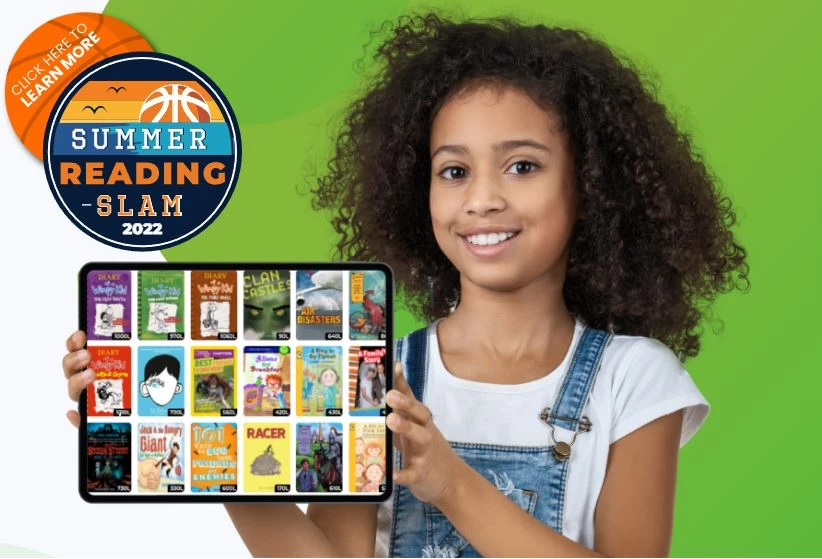
What can my child read? This is a common question for the parents of a child who has dyslexia. Since a child with dyslexia has strong comprehension skills, often above their age or grade level, this question can be difficult to answer because their reading skills do not match what they can understand. There are a few ways to work through this challenge.
1. Books at their independent level
Parents of children who have dyslexia often struggle to find appropriate leveled books for their children to read. For readers at the beginning level, it is best to use easy readers that follow basic patterns. These easy readers may not have the most interesting story, but these books are great for practicing phonics skills. Have your child read to you or take turns reading. Since this type of story will likely be below the vocabulary and comprehension level of a child who has dyslexia, this should be paired with a parent reading aloud or an audiobook to satisfy their desire for a good story or information.
The early chapter book market has exploded with some great titles in recent years. Children who are reading at this stage are no longer confined to books that seem too young. However, depending on your child’s level, they may have words that a child has not yet learned to decode. When your child encounters an unknown word, you can encourage them to try to sound out the word if it follows a rule that they know or you can just tell them the word. It is especially great for a child who has dyslexia to read the same book over and over. While it may seem less interesting to an adult, it provides the child with decoding practice and each time the reading will become easier.
Non-fiction books with graduated difficulty are great for kids who have a strong interest in a certain topic. Your child can start with an easier level book on a topic and as their vocabulary and knowledge grow, they can move to a book on the same topic that provides them with more specific vocabulary and detailed information. Since they are motivated by the topic, your child will be excited to read. You can further develop their knowledge by providing a real life experience or hands on activity on their favorite topic.
2. Audiobooks
Here is a great place for your child to explore what excites them. Maybe they love fiction books about magical creatures or non-fiction about space exploration; audiobooks provide children who are dyslexic with the ability to read whatever they want and utilize their strong comprehension skills. This is also great for family read-alouds! It can be a car ride activity or something you do together on a Saturday morning as part of a cozy ritual. However you do it, make sure to let your child’s interests lead the way. You may find the book to try, but you only want to continue it if they’re enjoying it. Reading together like this can provide great conversation starters.
3. Graphic Novels
Graphic novels demand to be read more slowly than print books because there is so much to see! A child with dyslexia may be able to pick up on the subtle gestures and clues in the drawings that others may not. This is a great way to allow them to use their strengths. Also, because the drawings add to the story, there is a reduced amount of text compared to a traditional novel. This reduced amount of text may allow a child with dyslexia to feel more comfortable while reading. You can even pair a graphic novel with a classic book and compare the two. There are graphic novel versions of the classics The Giver and Anne of Green Gables. Zita the SpaceGirl is a favorite for elementary children as well as many superhero stories.
4. Read alouds and Shared reading
Reading aloud is a great way to improve vocabulary and comprehension because it encourages parent-child interaction, which leads to learning. When you read to your child, you can interact and answer questions your child may have in that exact moment. You can model your thinking aloud as you read, with “I wonder…” or “This reminds me of…” statements or explanations of details or vocabulary in the story. This modeling eventually leads your child to wonder and make connections while reading on their own.
If you want, you can ask your child to share the reading. This could consist of taking turns reading a page or your child just reads one sentence every once in a while. Another option could be that your child is responsible for the dialogue of one particular character, as dialogue tends to have more common or regular words. Whatever you choose, be sure to follow your child’s lead and let them choose the story, the reading place, or some other aspect of this activity together. It could be that you share a snack while reading!
5. How LightSail Can Help
LightSail takes all the work out of finding books at your child’s independent reading level. Your child’s Lexile level will be monitored while they read in LightSail and updated every 15 days. And no longer do you have to worry about whether the content is right for your child. In the initial setup, LightSail provides parents with the ability to filter content through the content appropriateness matrix to make sure it is exactly right for your child. Fiction and non-fiction books for all levels and ages are available on LightSail. There truly is something for every reader.

Posted on 8.Aug.21 in Struggling Readers




